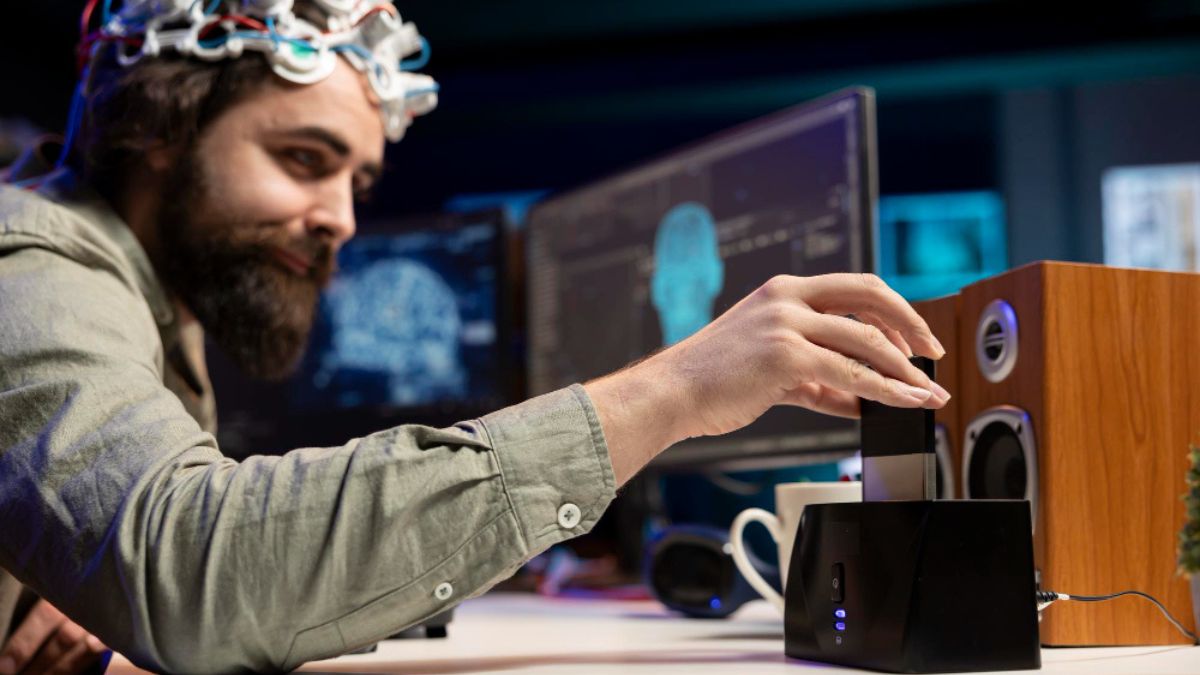Kirby Dedo, We all have them. Those crystalline, frozen moments in our gaming lives that are seared into our memory not because of a epic boss defeat or a perfectly timed jump, but because of something stranger, more personal. For me, and for a generation of gamers who grew up with the Nintendo Entertainment System, one of those moments is spelled out in two words, a phrase that sounds like a forgotten Japanese developer or a lost character from a fighting game: Kirby Dedo.
If you weren’t there, the term is meaningless. If you were, it might trigger a Pavlovian response of confusion, laughter, and a peculiar sense of wonder. “Kirby Dedo” isn’t a game. It’s not a character. It is, in fact, a glorious, beautiful mistranslation. A ghost in the machine. A secret message from the developers that was never meant to be seen. It is the single greatest argument for the artistic power of the pause button.
This is the story of that glitch. But more than that, it’s a love letter to the era it came from—an era of chunky cartridges, blinking lights, and mysteries that couldn’t be solved with a quick Google search. It’s about how a single, errant line of code can become a piece of collective cultural folklore, and how the most memorable heroes are sometimes the ones we find by accident.
Part 1: The Setup – A World of Pixels and Mystery
To understand Kirby Dedo, you have to put on your sepia-tinted glasses and travel back to the late 1980s and early 1990s. The Nintendo Entertainment System was the king of the living room. This was a pre-internet world for most. There were no wikis, no walkthroughs, no YouTube guides. Knowledge was passed down like oral history on playgrounds, in the pages of dog-eared Nintendo Power magazines, or through frantic phone calls to the one friend who claimed to have beaten Mike Tyson’s Punch-Out!!.
Games themselves were often inscrutable. Manuals were essential. The concept of “user experience” was in its infancy. Japanese games, in particular, were filled with quirks lost in translation. This created an atmosphere of profound mystery. Rumors flourished: “I heard if you beat Metroid without dying, you get to see Samus in a bikini!” “My cousin’s friend said there’s a way to resurrect Aeris in Final Fantasy VII!” (Okay, that one was later). We were explorers in digital worlds that held secrets we couldn’t possibly all know.
And into this world came a game that was already an enigma: Kirby’s Adventure.
Kirby: The Pink Puffball of Unknown Origin
Before he was a global superstar, Kirby was a strange, pink, circular creature who debuted in Kirby’s Dream Land for the Game Boy. He was simple, cute, and his signature ability was inhaling enemies. But in his first game, he couldn’t do what he’s most famous for: copy their abilities.
That all changed with Kirby’s Adventure on the NES in 1993. This was a technical marvel, pushing the aging 8-bit hardware to its absolute limits to create a vibrant, colorful world. The new copy ability system was revolutionary. Inhale a enemy with a sword? Kirby gets a hat and a blade. Inhale a laser-firing enemy? Now he’s a little sci-fi hero. This system added layers of strategy and fun. But in pushing the hardware so hard, the developers at HAL Laboratory created a fragile, complex masterpiece. And complex systems, when stressed, tend to break in interesting ways.
Part 2: The Glitch – Summoning the Dedo
So, how do you meet Kirby Dedo? The ritual is specific. You need a copy of Kirby’s Adventure. You need to be in the first level, “Vegetable Valley.” And you need to find a particular enemy: the Waddle Dee.
Waddle Dees are Kirby’s most common foes. They are small, round, footless creatures that walk back and forth harmlessly. They are the cannon fodder of Dream Land. In Vegetable Valley, there’s a specific Waddle Dee perched on a platform. The trick is to approach it, inhale it, but not swallow it. You have to hold it in your mouth.
Now, here comes the crucial part. While holding the helpless Waddle Dee in your mouth, you must quickly pause and unpause the game. Not once, but rapidly. Mash that pause button. As you do this, you maneuver Kirby over to a door that leads to a sub-room or a bonus area.
If you’ve done it correctly—and the timing could be finicky—something magical happens. You enter the door. The screen transitions. But the game seems to… stutter. For a split second, the name of the area you’re entering flashes at the bottom of the screen, as it always does. But the text is wrong. It’s garbled. It reads, for a single, glorious frame:
KIRBY DEDO.
Then, it corrects itself to the proper room name. But you saw it. You saw the ghost.
What Just Happened? A Technical Séance
For years, this was pure magic. Today, we can understand the technical “why,” which in no way diminishes the wonder. The game’s code is like a frantic stage manager running a complex play. Every character, every object, every tile on the screen is an actor with a specific role.
When you inhale a Waddle Dee, the game tags it as “held by Kirby.” When you pause the game, it freezes this state. The rapid pausing and unpausing while moving towards a door essentially confuses the stage manager. The game is trying to load the new room and all its assets, but it’s also trying to keep track of the Waddle Dee in Kirby’s mouth.
The text that appears at the bottom of the screen for a new area is pulled from a table in the game’s memory. The code is trying to call for the correct name, but in its confused state, it grabs the wrong data. It pulls data associated with the “held enemy” object—the Waddle Dee—and tries to display it as the room name. “Waddle Dee” in the game’s internal Japanese text tables is likely represented by specific characters. When the game tries to interpret this data as a level name, it spits out the nonsense phrase “KIRBY DEDO.”
It’s a classic buffer glitch. The game is asking, “What room is this?” and a panicked part of the code shouts, “WADDLE DEE!” but it comes out as gibberish. Kirby Dedo is the system’s own stutter. It’s a fleeting glimpse into the game’s soul, a raw data stream accidentally displayed on the canvas of the screen.
Part 3: The Legend Grows – Folklore in the Digital Age
In a world with the internet, the Kirby Dedo glitch would be documented on a wiki, a YouTube video would get 10 million views, and it would become a neat piece of trivia. But in 1993, it became a legend.
This is where the human element takes over. Imagine you’re nine years old. You discover this by accident. Or a friend tells you, “Dude, there’s a secret character called Kirby Dedo in the first level!” You try it. You see the text flash. Your heart pounds.
What did I just see? Who is Kirby Dedo?
With no way to verify it, imagination filled the void. On playgrounds and at sleepovers, theories multiplied:
-
The Secret Character Theory: Kirby Dedo was an early version of Kirby that was cut from the game. Maybe he was Kirby’s evil twin? A beta version? If you could just do the glitch right, maybe you could play as him.
-
The Developer’s Signature Theory: “Dedo” was thought to be the last name of a programmer at HAL Laboratory. This was his way of secretly signing his work, like a painter hiding their name in a corner of the canvas.
-
The Secret Level Theory: Maybe “Kirby Dedo” was the name of a hidden, ultra-difficult level. The glitch was a clue, a puzzle we had to solve to access it.
-
The Ghost in the Machine Theory: To a child’s mind, this was proof that the game was alive. Kirby Dedo was a benevolent spirit trapped in the cartridge, and we had found a way to make it reveal itself.
This was the beauty of it. The mystery was the point. Kirby Dedo was our secret. It belonged not to Nintendo or to the developers, but to us—the kids who spent hours experimenting, sharing findings, and building myths around a flicker of text. It was a collaborative act of storytelling, with a glitch as the catalyst.
Part 4: Beyond the Glitch – The Pause Button as a Portal
Kirby Dedo wasn’t alone. The “pause glitch” became a minor genre of its own in the NES era. The most famous example is the “Pause Trick” in Metroid that could kill the final boss, Mother Brain, in seconds. By rapidly pausing and unpausing while firing, the game’s damage calculation would go haywire. These glitches revealed something profound: the pause button wasn’t just a way to stop the action; it was a way to interact with the game’s core logic.
Pausing a game is a deeply unnatural act. It’s like stopping time. In the real world, you can’t pause a football game mid-tackle. But in a game, you can. This power allows us to see the world in a way the developers never intended. It turns the game from a flowing narrative into a static diorama, a system of parts. Pause glitches like Kirby Dedo were accidental discoveries that this diorama was fragile. If you jiggled it just right, the seams would show.
This transforms the player’s role. We are no longer just participants following a script. We become experimenters, boundary testers. We are like children who, told not to press a button, press it repeatedly just to see what happens. And in doing so, we sometimes discover a secret room in the house we thought we knew so well.
Part 5: The Modern World – Where Have All the Mysteries Gone?
Contrast the era of Kirby Dedo with today’s gaming landscape. It’s not a criticism, but an observation of a fundamental shift. We live in the age of total information.
-
Day-One Guides: A game is released, and within hours, complete wikis and video guides detail every secret, every ending, every build.
-
Data Mining: Teams of fans will tear apart a game’s code the moment it’s released, extracting unused assets, dialogue, and secrets long before anyone could find them organically. There are no surprises left in the code.
-
Patches and Updates: In the NES era, a glitch was forever. If your cartridge had Kirby Dedo, it would always have Kirby Dedo. Today, a quirky glitch is often patched out within days in a title update. The experience is homogenized.
The modern mystery isn’t “What is this secret?” but “How do I execute this complex, intended secret?” The puzzles are designed by the developers to be solved with community effort. The organic, accidental, broken mystery is a rare commodity. We traded the wild, untamed wilderness of 8-bit games for a beautifully curated national park. It’s safer, more polished, and often more fun, but you’ll never discover a unmapped cave that the park rangers didn’t know about.
Part 6: The Human Need for Mystery and the “Dedo” in All of Us
This brings us to the core of why Kirby Dedo resonates so deeply, even decades later. It speaks to a fundamental human need: the need for mystery and personal discovery.
Psychologically, mystery is a powerful driver. It engages our curiosity, a trait essential for learning and exploration. The unknown is frightening on a large scale, but on a small, safe scale—like within a video game—it’s exhilarating. Solving a mystery, even an unsolvable one, gives us a sense of agency and accomplishment. We found this. We figured it out (even if “figuring it out” was just creating a great story).
Kirby Dedo was a personal mystery. It wasn’t broadcast by Nintendo. It was something you stumbled upon or heard about in a whisper. This personal connection is what transforms a bug into a cherished memory. It’s the gaming equivalent of finding a hidden, handwritten note in a used book. It’s a connection to a stranger, to the past, and to the artifact itself that is uniquely yours.
We all have our own “Kirby Dedo” moments. Maybe it was the secret to getting the Triforce in the original Zelda (a rumor that turned out to be false, but we believed!). Maybe it was the haunting, empty hallways of the “Press Start” screen in Super Smash Bros. Melee. Maybe it’s a weird physics glitch in Skyrim that sent a giant flying into the stratosphere. These are the moments that break the fourth wall not between player and character, but between player and system. They remind us that we are interacting with a machine, a creation, and that creations are imperfect and, therefore, full of surprise.
Part 7: Kirby Dedo’s Legacy – From Glitch to Cultural Touchstone
The story of Kirby Dedo doesn’t end in the 90s. The legend has been kept alive by the very internet that killed the mystery. YouTube is filled with videos documenting the glitch. Wikis have precise, technical explanations. It has become a celebrated piece of gaming history.
In a beautiful twist of fate, the creators at HAL Laboratory have even acknowledged the glitch with a wink and a nod. While not directly naming “Kirby Dedo,” the modern Kirby games are filled with Easter eggs and references that show the developers have a deep affection for their series’ history and its quirky community.
More importantly, the spirit of Kirby Dedo lives on in the speedrunning and glitch-hunting communities. These are gamers who have taken the childhood impulse to “break the game” and turned it into a high art form. They use tools and knowledge far beyond what we had as kids, but the goal is the same: to find the seams in the reality of the game and push through them. They are the cartographers of the unmapped caves, and they operate in the same spirit of wonder and discovery that made finding Kirby Dedo so magical.
Conclusion: The Hero We Didn’t Need, But the One We Deserved
So, who is Kirby Dedo?
He is not a character. He is a moment. He is the sound of a system groaning under the weight of its own ambition. He is a Rorschach test of 8-bit inkblots that allowed us to project our own stories. He is a monument to a time when games were black boxes of wonder, and the greatest adventures sometimes happened when the game was paused.
In the end, Kirby Dedo is a lesson. A lesson that art is not just what the artist intends, but what the audience discovers. It’s a lesson that the most enduring memories are often the unscripted ones, the mistakes that become features, the glitches that become ghosts.
He is a reminder that before we had all the answers, we had something perhaps more valuable: we had questions. And in the quiet, pixelated worlds of our childhood cartridges, those questions led us to wonders that no walkthrough could ever document. Kirby Dedo was, and will always be, our secret. A shared, silent nod to anyone who was there, who mashed that pause button, and who, for a single frame, saw the impossible.






